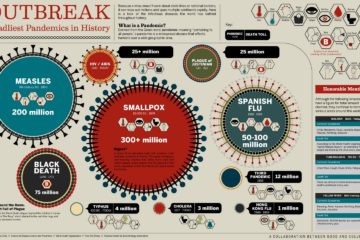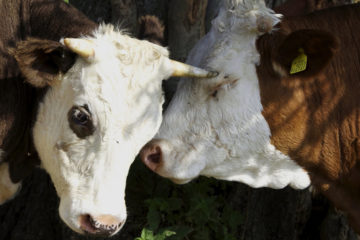This PETA video exposes the maltreatment of cows in India. Of course, this is not the case everywhere and there are farms in which cows are treated in a humane manner. However, do you know which type of farm you get your milk from?
I watched this DVD and cried throughout the majority of it! It was sad, painful, shameful and SO cruel. I just couldn’t justify having dairy products after seeing it.
Ignorance can be bliss but we have our minds so that we can use them and make wise/well thought out judgements right? So maybe you should view it and then make a choice about what you eat. Just a thought.



20 Comments
Ajay Rajani · August 6, 2008 at 10:41 am
Hey – is this video meant to have no sound?
Thanks for putting it up !
Ajay
Heena Modi · August 6, 2008 at 11:30 am
Oh yeah! I forgot to mention that! It is but I’m currently working on uploading it from a DVD to my PC and then onto YouTube without losing the sound. Unfortunately this is how far I’ve got.
I’ll update it as soon as Suraj and I have figured out how to keep the sound!
admin · August 6, 2008 at 9:22 pm
Ajay we’ve done it! All sorted. Sound is working now.
Ajay Rajani · August 7, 2008 at 11:26 am
Thank YOU Heena, Suraj,
I could not watch all of this – it is too much for me to handle….
Heena Modi · August 7, 2008 at 11:40 am
Yeah it’s hard going isn’t it?
Do you remember when we were talking about what motivates me to be/remain vegan? It’s those images I was talking about.
Perhaps if I knew that the produce was coming from a farm that cared for their animals, that treated them in a humane manner, rather than, the focus being mass production; I may consume dairy products again. But for now….I pass
Hope you’re OK
Ajay Rajani · August 7, 2008 at 3:43 pm
Yes! I feel what you are saying now after seeing part of the video….I must admit today I’ve had no dairy and decided not to put milk in my tea like I normally would…one step at a time and one day at a time….I’m certainly more mindful now
I’ll be passing that video on to others…
God bless you.
Heena Modi · August 8, 2008 at 4:16 pm
It’s always good to be more mindful.
We do what we can do right? Or I guess, we do what we want to do.
Anyway definitely glad you’ll be forwarding the video
Thanks
Heena
Ajay Rajani · August 8, 2008 at 7:14 pm
“If all the insects on earth disappeared, within 50 years all life on earth would disappear. If all humans disappeared, within 50 years all species would flourish as never before.”
What a powerful quote this is !
It was from this TED talk – not sure if you’ve heard about these talks – some are very enlightening!
http://www.ted.com/index.php/talks/ken_robinson_says_schools_kill_creativity.html
peace + harmony,
Ajay
Heena Modi · August 11, 2008 at 3:40 pm
I couldn’t open it hun
Heena Modi · August 14, 2008 at 12:44 am
This website has a great article explaining the history of when humans started drinking milk from a species other than human. It also discusses the effects of this change.
http://www.govegan.de/we-are-weaned
Heena Modi · September 18, 2008 at 5:29 pm
The Ethical Consumer (http://www.ethicalconsumer.org/FreeBuyersGuides/fooddrink/yoghurtdairysoya.aspx) reports the following: –
Dairy
The animal rights group Viva! released a report this year on the dairy industry, which exposes what it describes as “the cruel, dark side to the dairy industry.”(1). To keep them constantly producing milk, cows are forcibly impregnated whilst still lactating, meaning they endure both pregnancy and lactation at the same time, usually for seven months of the year. Once a cow gives birth her calf is removed after only a day or two. This separation causes severe stress to both animals and has been described as the most potentially distressing incident in the life of the dairy cow.
Male calves are considered a waste by-product as they can’t produce milk. Dairy/beef crosses are sold to beef farms with calves as young as seven days old enduring long journeys to and from livestock markets. Pure dairy males are usually killed within a week or two for baby food, pie ingredients or rennet for cheesemaking (1). Most female calves replace the dairy cows that are killed each year when their productivity drops. They usually spend the first six to eight weeks of life in tiny calf stalls, unable to exercise or socialise with other calves (1). They are fed commercial milk replacer and artificially inseminated at 15 months old to begin the cycle of pregnancy and lactation.
Cows would naturally live for up to 20 years, but the hard existence of the average commercial dairy cow takes it toll. Milk productivity begins to drop at 5-7 years of age at which point the animals are commonly killed for meat (1).
The dairy industry is also highly polluting. Approximately a quarter of all agricultural water pollution incidents recorded by the UK National Rivers Authority are related to dairy farming (2). The UK’s 2.2 million dairy cows also produce 230 000 tonnes of the greenhouse gas methane (2).
Also the BBC News (http://news.bbc.co.uk/1/hi/uk/7594625.stm) reports: –
Around 482,000 male dairy calves are born in the UK each year, but because they are unsuitable for beef production, they are either killed or exported to continental veal farms.
References from the info provided by The Ethical Consumer
1 The Dark Side of Dairy, a Viva! Report by Toni Vernelli BSc Animal Biology and Conservation, 2005
2 Wrecking The Planet, Joni Seager, The State of The Environment Atlas, Penguin Books, 1995
3 Physicians Committee for Responsible Medicine http://www.pcrm.org, viewed on 21/10/05
4 http://www.food.gov.uk, viewed on 4/11/05
5 http://www.viva.org.uk, viewed on 4/11/05
6 http://www.purifymind.com/Hippo, viewed on 4/11/05
7 Corporate Watch newsletter: issue 24, June/July 05
8 Breaking the Rules, International Baby Food Action Network, 2004
9 http://www.itfglobal.org, viewed on 8/11/05 10 Earth Island Journal: Winter 2002/Vol17
11 Responsible Shopper website: Dean Foods viewed on 02/02/05
12 Ethical Consumer: 85 October/November 2003
13 Who Owns Whom: 2003/2004
14 The Ecologist: May 2003
15 The Ecologist: December 2004
16 Companies that test on animals, PETA, July 2004
17Breaking the Rules: 2004
18 Corporate Watch newsletter: issue 22, Feb/March 2005
19 BUAV Factsheet E3 Cosmetics Companies Guide, November 2004
20 Power Hungry – six reasons to regulate global food corporations: ActionAid report 2005
21 Ecolinks Boycott list – http://www.ecolinks.net, viewed on 25/02/03
22 http://www.oilpackers.com, viewed on 8/11/05
23 http://www.scconline.org, viewed on 11/10/05
24 Yeo Valley Group Corporate Communications: �Minimising Our Impact on the Environment’ 2005 < br>25 http://www.notmilk.com, viewed on 9/11/05
26 http://milk.elehost.com, viewed on 9/11/05
Heena Modi · September 18, 2008 at 5:35 pm
Is being vegan the solution? Is soya the solution?
The Ethical Consumer (http://www.ethicalconsumer.org/FreeBuyersGuides/fooddrink/yoghurtdairysoya.aspx) says: –
Soya solution?
There are now a range of widely available dairy-free alternatives made from soya. However, soya has problems of its own. 56% of the world’s soya crop is now genetically modified (4). GM is high on many people’s agendas, mainly for the health, environmental and social issues surrounding the technology. All the soya yoghurts in this report are marketed as GMO free.
Historically, logging and cattle ranching have been responsible for most rainforest destruction in the Amazon. Recent increases in demand for soya have accelerated this destruction, particularly in Brazil. However, the majority of the world’s soya is actually fed to cattle, including dairy cattle (5,6).
References
See the comment above
Heena Modi · September 18, 2008 at 5:56 pm
So if dairy produce isn’t ethical, acceptable or good for us should but you don’t want to go vegan should we use organic milk? Is it a better option?
Here’s what the Ethical Consumer says about organic alternatives: –
http://www.ethicalconsumer.org/FreeBuyersGuides/fooddrink/yoghurtdairysoya.aspx)
Soil Association certified products are better for the environment and for the consumer in terms of avoiding much of the antibiotics, hormones and GM feed used in conventional milk production. But do they offer a better deal for the cows?
There are no guidelines for the length of time organic dairy cows may be housed indoors, but completely indoor systems are prohibited. Highly invasive practices such as embryo transfer are forbidden but artificial insemination is allowed. Fertility hormones are prohibited for synchronising calving but not for bringing an infertile cow into heat. Calves must be group housed after seven days old. Castration with a rubber ring is allowed within the first week of life. Disbudding (permanently preventing horn growth by applying a hot iron to the horn-forming tissue) is allowed up to 3 months. Calves can’t be taken to market under one month old, but after this, eight hour journeys are allowed. Organic cows are still impregnated each year to provide a continuous supply of milk and separated from their calves within 24-72 hours of birth. The scheme also allows unwanted calves to be killed soon after birth (1).
Is it really better ?
References
See the comment above
Robert Evans MEP · September 20, 2008 at 3:00 pm
Dear Heena Modi,
Thank you for your letter regarding the treatment of dairy cows in India. As Secretary of the European Parliament’s all party Animal Welfare Intergroup and Vice-President of the League Against Cruel Sports, animal welfare is an issue which I take very seriously.
There is unfortunately very little the European Parliament can do about the treatment of dairy cows in India and the United States as the European Union has no jurisdiction in these areas. I have however brought this situation to the attention of my colleagues Neena Gill MEP, Chairwoman of the India Delegation and Peter Skinner MEP, a member of the Delegations for Relations with the United States.
In the meantime, I would advise you to continue to raise awareness within the diary farming communities in India and the United States, encouraging farmers that well treated dairy cows will have better yield over a longer period of time.
Please know that I will continue to work for improvements in animal welfare across the European Union.
Yours sincerely,
Robert Evans MEP
Labour Party Member of the European Parliament
Heena Modi · September 20, 2008 at 3:06 pm
Thank you for replying Robert.
Also thanks for passing my on my concerns to Neena and Peter. I really appreciate that.
I hope to hear from them soon
Heena
Mahersh · September 20, 2008 at 10:30 pm
Although it is not the focus of the piece, this is the one of those rare mainstream-press articles that confirms that calves are routinely killed/sold for meat as part of the milk production process.
http://news.bbc.co.uk/1/hi/uk/7594625.stm
Vanessa · September 30, 2008 at 6:54 pm
Death and waste
“It’s a complete waste,” says Jones, who has 750 head of cattle near the village of Plaistow, south of London, and will kill all his 150 bull calves this year. “They keep telling us food is in short supply, and we keep killing healthy cows because there is no market for them. It’s madness.”
Solutions
What do you think of this? In my opinion, the best would be if they were not produced in the first place since they are brought into this world as a byproduct, and many are shot straight after and disposed of.
However, given that there is a demand for milk, should we be encouraging meat eaters to eat veal? Or is there no difference between this and them being shot at birth?
The quote from the cattle farmer makes it very clear what they are “concerned” about – it’s not the healthy animals they’re killing that worries them (being shot in the head at birth is a lot less painful than being cooped up in a veal crate and then having their throats cut, let alone the miserable life the dairy cow has to endure before she is
transported hundreds of miles to wait in line with other worn out mothers at the slaughterhouse – or in poorer societies turfed out into the street to get run over or starve to death).
Encouraging meat eaters to eat veal would delight the dairy farmers because it would make the misery they inflict on the dairy cows even more profitable because they could sell the unwanted calves as well as the blood and pus laden milk industry they are a waste product of.
This is the same as wearing leather shoes as it helps the slaughterhouses stay profitable.
Conclusion – The only way to stop this kind of thing is simply to stop it – full stop.
Heena Modi · September 30, 2008 at 7:06 pm
When I first read this I thought “Quite a complex situation” but when you think about it, I guess it isn’t at all!
I liked your conclusion
Wenda · October 5, 2008 at 6:58 pm
The “milk” discussion is, in my humble opinion, extremely complicated to rationalise unless it is based on a spiritual perspective or vegan perspective. It is so easy to play “God” rather than accept that we, as humans, are just a tiny cog in the machinations of this physical incarnation and the bigger picture is, if we are completely honest, beyond our comprehension. I believe it is our duty to look to ourselves and see what needs changing in our lives to live a non-violent existence and only then are we able to demonstrate that Ahimsa is the only way forward.
There is talk of an experiment in the production of Ahimsa milk in the UK. A summary of this new idea is that calves are sent to sanctuaries and the mother cow retired at the end of her productive life to another sanctuary.
It seems that the relationship between cow and calf has been overlooked as well as the need for the retired cow to have the company of her peers with whom she has toiled for on average 4.5 years in this country.
I know without a doubt that ahimsa milk CAN be produced for those who feel the need for cows milk in their diets, but it’s costly. As most vegetarians do not respect this fact and see milk as a food basic — I wonder how many would accept that places like Bhaktivedanta Manor who “dairy” know that it costs in excess of £3.00 a litre to produce.
Ketan · October 5, 2008 at 7:02 pm
My views on use of ‘non-violent’ cows milk is that that this does not contradict Jain values.
The ancient Jain scriptural aphorism Parasparopagraho jivanan (All life is bound together by mutual support and interdependence) support this and that we different species do share resources and capacity naturally together
In all the transactions we do as humans their is always himsa (violence) from everything to breathing to walking to eating plant food. The trick is to minimise this rather then have absolutes. The current way of farming is
at the highest level of himsa (forced death) and that why striving towards veganism is the Jain answer
If I was living a hundred years ago and consumed milk from a farm, where a cow produced excess milk, gave dung from growing crops and leather from the skin once the animal had naturally passed away and also used the bulls (without overburden) for farming benefit (just like we use our bodies for labour) then a need for being a vegan would not exist.
Comments are closed.